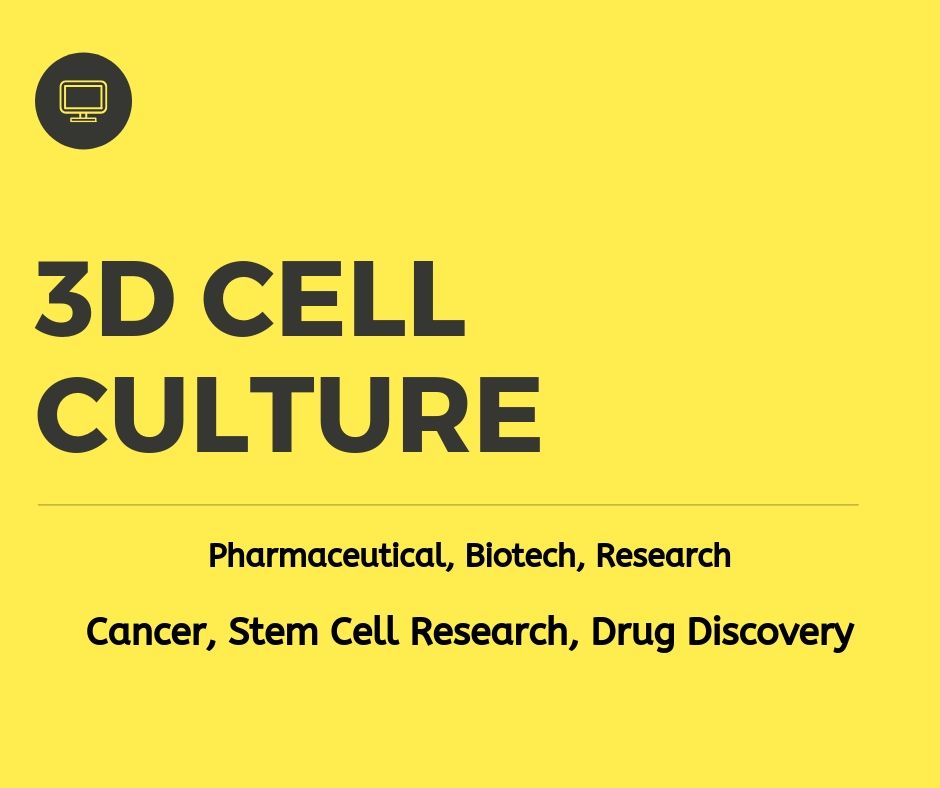A 3D cell culture is an artificially created environment in which biological cells are permitted to grow or interact with their surroundings in all three dimensions.
Factors such as rising focus on developing alternative methods for animal testing, funding initiatives from government and private investors, technological advancements and product launches, and growing awareness are driving the growth of the 3d cell culture market.
The Global 3d cell culture market to offer business growth of $1720.3 million in coming years.
To Gain Crucial Insights Into the Market | Download PDF Brochure Now:
https://www.marketsandmarkets.com/pdfdownloadNew.asp?id=191072847
Developing Alternative to Animal Testing:
Animal models are widely used in cell biology research for studying human-specific diseases. However, this carries several disadvantages—the possibility of harm to animals, difficulties in ensuring result accuracy due to differences in species, disease mechanisms, and drug responses. To overcome these issues, various institutes are involved in developing alternative methods for drug development.
As 3D cell cultures can serve as an economical alternative to animal models, the current focus on lessening animal use in research is expected to support the growth of the 3D cell culture market.
Regenerative Medicine, an Alternative to Organ Transplantation:
Regenerative medicine a branch of translational research that involves the regeneration of human cells, tissues, and organs is gaining increasing importance. 3D cell culture can be employed to create a 3D cellular environment that mimics the physiological conditions of major organ systems; innovative techniques, such as 3D bioprinting and microfluidics can also be used for tissue and organ generation. The focus on regenerative medicine and 3D cell culture in this application is expected to grow significantly in the future, which will showcase strong growth opportunities for stakeholders in 3d cell culture market.
Cancer and Stem Cell Research:
The cancer and stem cell research segment is estimated to account for the largest market share in 3d cell culture market. Growth of this application segment is attributed to increasing incidence of cancer and significant funding initiatives for cancer research from government as well as private organizations.
Pharmaceuticals and Biotechnology Industries:
Pharmaceutical and biotechnology companies are expected to form the largest end-user segment. The presence of a large number of pharmaceutical and biotechnology companies, increasing R&D spending in these companies, and growing focus on alternative testing models instead of animal techniques are the key drivers for this end-user segment.
Get Expert Analysis and Insights of Global Market | Request Sample Report:
https://www.marketsandmarkets.com/requestsampleNew.asp?id=191072847
North America the Land of Opportunities in 3D Cell Culture Market:
The market is dominated by North America, followed by Europe, Asia Pacific, and the Rest of the World (RoW). The dominance of the North American market is attributed to factors such as increase in incidence of cancer, presence of well-established pharmaceutical and biotechnology industry, and availability of technologically advanced products.
The 3D cell culture market is highly competitive with the presence of various players. Some of the major players operating in the market are Thermo Fisher (US), Corning (US), Lonza (Switzerland), Merck (Germany), ReproCELL (Japan), and InSphero (Switzerland). The other players operating in this market include Global Cell Solutions (US), Synthecon (US), 3D Biotek (US), Kuraray (Japan), Hamilton Company (US), Mimetas (Netherlands), Emulate (US), Nano3D Biosciences (US), and QGel (Switzerland).
